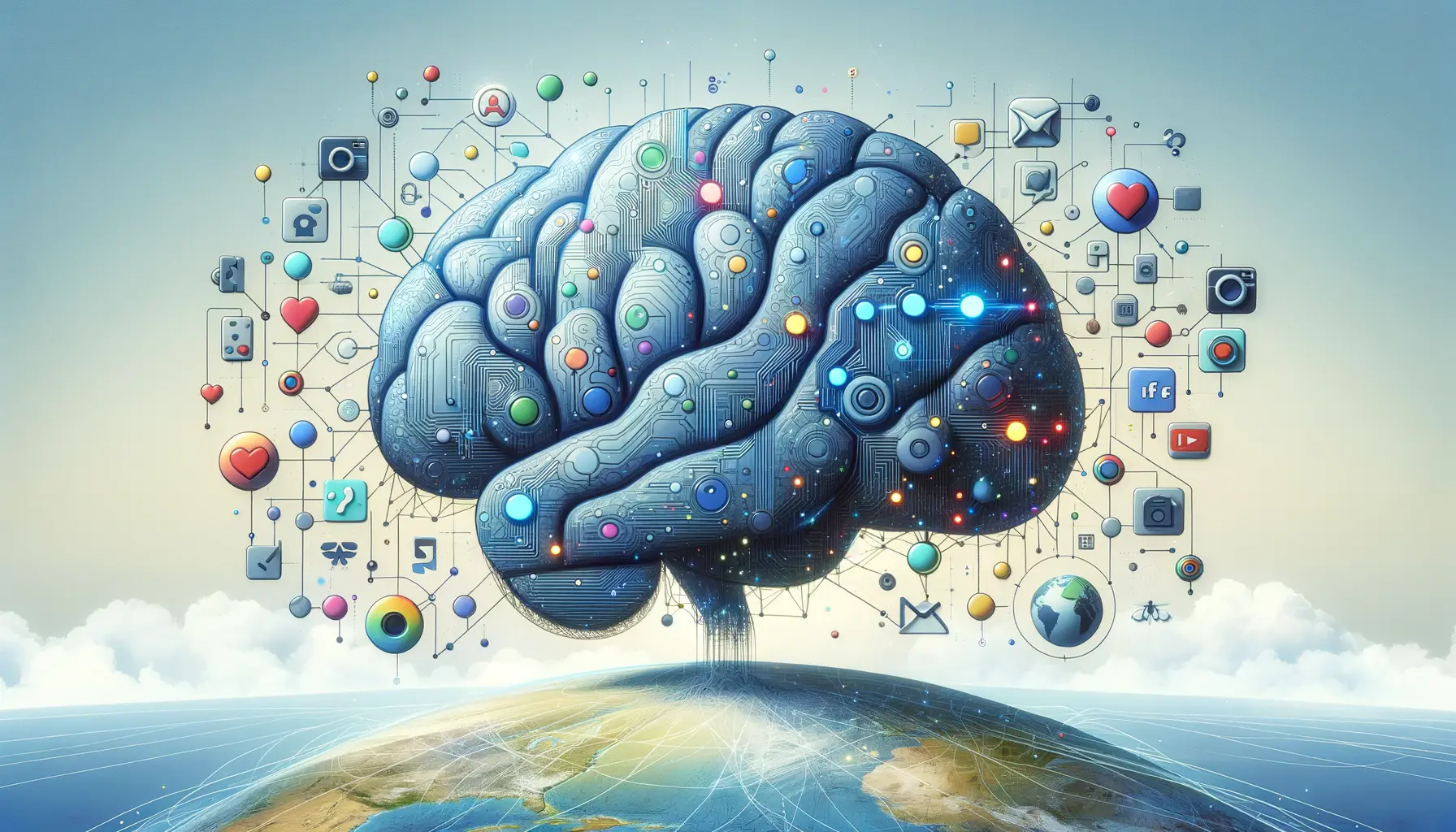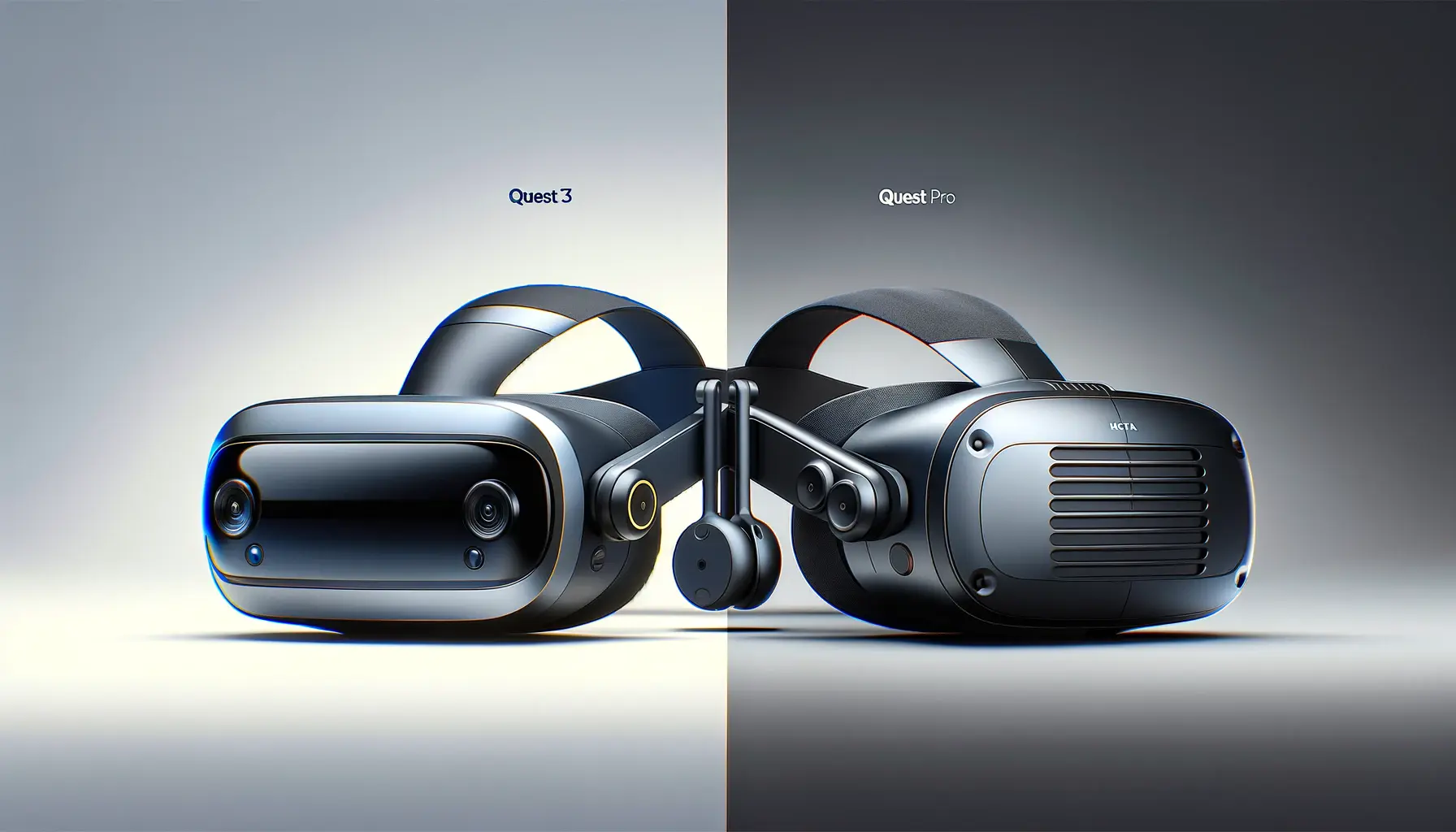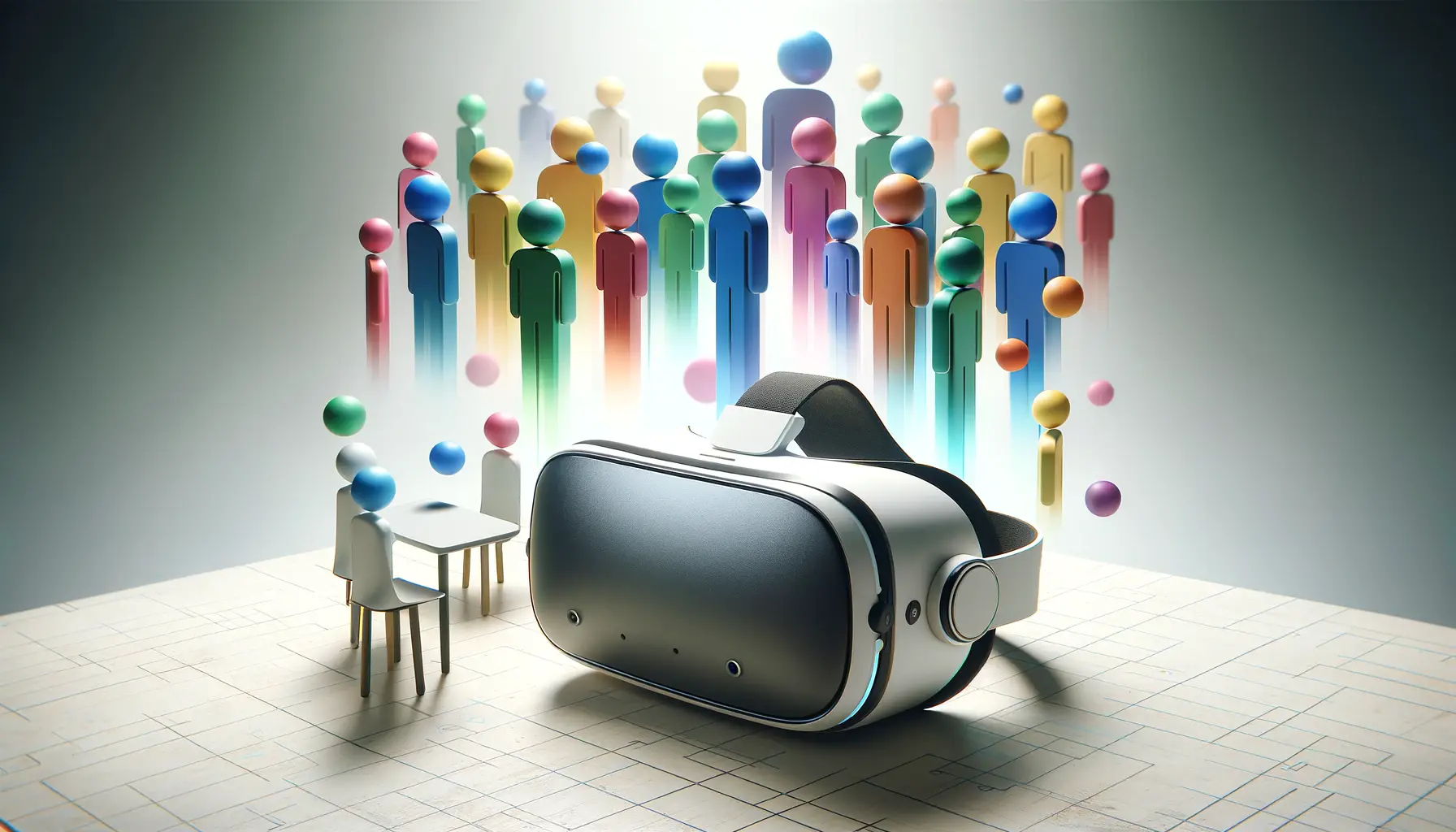The integration of virtual reality (VR) with social media platforms represents a significant leap forward in how we interact, communicate, and experience digital content.
The Meta Quest 3, the latest offering in the realm of VR headsets, stands at the forefront of this evolution, promising users an immersive and interconnected virtual experience like never before.
This article delves into the intricacies of how the Meta Quest 3 harnesses the power of social media integration to redefine the boundaries of virtual interaction and community building.
At its core, the Meta Quest 3 is not just a piece of hardware but a gateway to a myriad of virtual spaces where users can interact, share, and engage with content and each other in ways that mirror real-life social interactions but in a digital landscape.
The seamless integration with social media platforms is a testament to Meta’s vision of creating a more connected and immersive virtual world.
This integration is not merely about sharing VR experiences on social media; it’s about creating a cohesive ecosystem where VR and social media coalesce to enhance user engagement and foster a sense of community.
- Understanding the Integration
- Expanding the Social VR Landscape
- Enhancing User Engagement Through Social Features
- Challenges and Solutions in Social VR Integration
- Future Directions of Social VR Integration
- Impact on Gaming and Entertainment
- Education and Training Applications
- Embracing the Future: The Convergence of Meta Quest 3 and Social Media
- Meta Quest 3 and Social Media Integration FAQ
Understanding the Integration
The Mechanics of Social Media Integration
The Meta Quest 3’s integration with social media begins with its ability to connect users to their existing social media accounts, allowing for a smooth transition of social interactions from traditional platforms to the VR environment.
This connection enables users to share their virtual experiences, achievements, and moments with their social media networks, thereby extending the reach of VR content beyond the confines of the headset.
Moreover, the integration facilitates real-time social interactions within the VR space, such as attending virtual events, participating in multiplayer games, or joining social VR platforms like Horizon Worlds.
These interactions are enhanced by features like live streaming, voice chat, and avatar customization, making the virtual social experience more engaging and personalized.
Benefits of Social Media Integration
The integration of social media with the Meta Quest 3 offers numerous benefits, including increased user engagement and retention.
By allowing users to connect with friends and communities within VR, Meta Quest 3 creates a more social and interactive VR experience.
This social connectivity encourages users to spend more time in VR, exploring new content, and engaging with others, thereby increasing the overall appeal of the Meta Quest 3 as a social platform.
Another significant benefit is the enhancement of content discovery and sharing.
Users can easily share their favorite VR experiences, games, and moments on social media, helping to promote VR content and attract new users to the platform.
This not only benefits content creators by increasing visibility but also enriches the user experience by exposing them to a wider range of VR content curated by their social networks.
The integration of Meta Quest 3 with social media platforms is revolutionizing the way we experience virtual reality, making it more social, interactive, and connected than ever before.
Expanding the Social VR Landscape
The Meta Quest 3’s integration with social media is not just about enhancing individual experiences; it’s also about expanding the social VR landscape.
By bridging the gap between VR and social media, Meta Quest 3 is paving the way for a new era of digital interaction where virtual communities can thrive and grow.
This section explores how Meta Quest 3 contributes to the expansion of the social VR landscape through innovative features and community-building initiatives.
One of the key aspects of this expansion is the development of virtual spaces designed for social interaction.
These spaces range from virtual concert halls and movie theaters to digital meeting rooms and social hubs, all designed to facilitate a variety of social activities within the VR environment.
The integration with social media enhances these spaces by enabling users to invite friends from their social networks, share experiences in real-time, and even organize virtual events that can be broadcasted to a wider audience.
Key Features Supporting Social VR
- Virtual Event Hosting: Users can create and attend events within VR, from live concerts to educational seminars, making the virtual world a new venue for public gatherings.
- Multiplayer Gaming: Enhanced with social media connectivity, multiplayer gaming in VR becomes a more social experience, allowing friends to join games together, share achievements, and compete in leaderboards.
- Avatar Customization: Personalized avatars play a crucial role in social VR, enabling users to express their identity and connect with others on a more personal level.
- Real-time Communication Tools: Voice chat, messaging, and virtual gestures facilitate seamless communication among users, making social interactions more natural and engaging.
Community-Building Initiatives
Meta Quest 3’s social media integration is instrumental in fostering virtual communities.
By leveraging social media platforms, users can find and join groups with shared interests, participate in community events, and contribute to discussions and content creation.
These communities become the backbone of the social VR ecosystem, driving engagement and ensuring a vibrant and dynamic virtual world.
Furthermore, Meta encourages community building through support for content creators and developers.
By providing tools and platforms for creating social VR experiences, Meta Quest 3 empowers creators to innovate and enrich the social VR landscape.
This not only diversifies the content available on the platform but also encourages users to engage with the community, participate in content creation, and share their experiences with a wider audience.
The expansion of the social VR landscape through Meta Quest 3’s integration with social media represents a significant step towards a future where virtual interactions are as meaningful and engaging as real-world socializing.
Enhancing User Engagement Through Social Features
The integration of Meta Quest 3 with social media platforms significantly enhances user engagement by leveraging the power of social features.
These features are designed to make the VR experience more interactive, personalized, and connected, encouraging users to engage deeply with the content and with each other.
This section delves into the specific social features that contribute to heightened user engagement in the Meta Quest 3 ecosystem.
At the heart of this enhanced engagement is the ability for users to share their VR experiences directly on social media.
This sharing capability extends the VR experience beyond the confines of the headset, allowing users to showcase their virtual adventures, achievements, and creations with friends and followers on various social platforms.
This not only amplifies the visibility of VR content but also invites others to explore the immersive world of Meta Quest 3.
Key Social Features Driving Engagement
- Live Streaming: Users can broadcast their VR gameplay or experiences live on social media, engaging with their audience in real-time.
- Social Media Integration: Seamless connectivity with social media accounts enables easy sharing of content, event invitations, and joining friends in VR experiences.
- Co-Viewing Experiences: Friends can watch movies, attend virtual events, or explore new worlds together in VR, enhancing the sense of togetherness.
- Collaborative Content Creation: Tools and platforms within Meta Quest 3 allow users to create and share VR content collaboratively, fostering a creative community.
Personalization and Customization
Personalization plays a crucial role in enhancing user engagement in the Meta Quest 3 ecosystem.
Users can customize their avatars, environments, and settings to reflect their personal style and preferences, making the VR experience uniquely theirs.
This level of personalization, combined with the ability to share these customizations on social media, encourages users to invest time and creativity into their virtual presence.
Moreover, the Meta Quest 3 platform utilizes user data to offer personalized content recommendations, including games, experiences, and social activities that align with the user’s interests and behaviors.
This targeted approach ensures that users are continually presented with content that is relevant and engaging, encouraging them to explore new aspects of the VR world.
The integration of social features in Meta Quest 3 not only enhances the overall user experience but also serves as a catalyst for building a vibrant and engaged virtual community.
Challenges and Solutions in Social VR Integration
While the integration of Meta Quest 3 with social media platforms offers numerous benefits, it also presents several challenges.
These challenges range from privacy concerns and content moderation to ensuring a seamless user experience across different platforms.
Addressing these challenges is crucial for maintaining user trust and fostering a healthy social VR ecosystem.
This section explores the primary challenges associated with social VR integration and the solutions implemented by Meta to address them.
Privacy concerns are at the forefront of social VR integration.
Users are increasingly wary of how their data is used and shared across platforms, especially in environments as immersive and personal as VR.
The potential for data misuse or breaches poses a significant challenge to user trust and engagement.
Privacy and Data Security
- Transparent Data Policies: Meta has implemented clear and transparent data policies that outline how user data is collected, used, and shared within the Quest 3 ecosystem. This transparency is key to building user trust.
- User Control Over Data: Users are given control over their privacy settings, allowing them to manage who can see their activity, who they interact with, and how their data is used for personalization and recommendations.
- Secure Data Practices: Meta employs robust security measures to protect user data from unauthorized access or breaches, ensuring a safe VR experience.
Content Moderation and Community Standards
Another challenge in social VR is content moderation.
The immersive nature of VR means that negative experiences or interactions can have a profound impact on users.
Ensuring a positive and safe environment is essential for fostering community and engagement.
- Community Guidelines: Meta has established comprehensive community guidelines that outline acceptable behavior and content within the Quest 3 platform. These guidelines are crucial for maintaining a positive social environment.
- Moderation Tools: A range of moderation tools are available to both users and administrators, enabling the reporting and removal of inappropriate content or behavior.
- Support for Affected Users: Meta provides support and resources for users affected by negative experiences, emphasizing the company’s commitment to user well-being.
Seamless Cross-Platform Experience
Creating a seamless user experience across VR and social media platforms is a technical challenge.
Differences in interface, interaction models, and content formats can create friction for users navigating between VR and traditional social media.
- Unified User Interface: Meta Quest 3 features a user interface that is intuitive and consistent with popular social media platforms, reducing the learning curve for new users.
- Integrated Social Features: Social features such as messaging, notifications, and content sharing are integrated directly into the VR experience, making it easy for users to connect with their social networks without leaving VR.
- Adaptive Content Formats: Meta supports adaptive content formats that ensure VR content can be easily shared and consumed on social media platforms, bridging the gap between VR and traditional digital content.
By addressing these challenges with thoughtful solutions, Meta Quest 3 is setting a standard for social VR integration, ensuring a safe, engaging, and seamless experience for users.
Future Directions of Social VR Integration
The integration of Meta Quest 3 with social media is not an endpoint but a stepping stone towards a more interconnected and immersive future.
As technology evolves, so too will the ways in which we interact within virtual spaces.
This section explores the potential future directions of social VR integration, highlighting the innovative possibilities that may redefine our virtual experiences.
One of the most exciting prospects is the development of more sophisticated and lifelike avatars.
Advances in AI and machine learning could enable avatars that not only look more like their real-world counterparts but also mimic their expressions and body language in real-time.
This leap in realism could significantly enhance the sense of presence and emotional connection within social VR environments, making virtual interactions feel as natural and nuanced as face-to-face conversations.
Enhanced Realism in Virtual Interactions
- Real-time facial expression tracking to convey emotions more accurately.
- Advanced body language simulation for more immersive and expressive communication.
- Personalized avatars generated from user photos to enhance realism and identity representation.
Integration with Emerging Technologies
As emerging technologies like augmented reality (AR) and mixed reality (MR) continue to mature, their integration with VR and social media platforms presents new opportunities for hybrid experiences.
Imagine attending a virtual concert through your Meta Quest 3, while AR elements overlay information about the artists or allow you to interact with other attendees in innovative ways.
This blending of technologies could create experiences that are not only more engaging but also more informative and interactive.
- AR overlays in social VR environments for enhanced information and interactivity.
- Seamless transition between VR, AR, and MR for fluid and versatile virtual experiences.
- Use of spatial computing to integrate virtual and physical environments, enabling users to interact with both simultaneously.
Building Global Virtual Communities
The future of social VR integration also lies in its potential to build and sustain global virtual communities.
As the barriers between different digital platforms continue to blur, users from all over the world will have unprecedented opportunities to come together, share experiences, and collaborate in ways that were previously unimaginable.
These global communities could become hubs of creativity, learning, and cultural exchange, enriching the virtual landscape with diverse perspectives and ideas.
- Global events and conferences hosted in VR, accessible to anyone with a headset.
- Collaborative virtual workspaces for international teams and projects.
- Cultural exchange programs within social VR platforms to foster understanding and diversity.
The future of social VR integration holds the promise of a world where virtual interactions are as meaningful and enriching as those in the physical world, bringing us closer together in ways we are only beginning to imagine.
Impact on Gaming and Entertainment
The integration of Meta Quest 3 with social media has a profound impact on the gaming and entertainment industries, transforming how content is consumed, shared, and experienced.
This fusion not only enhances the immersive experience of VR gaming but also redefines entertainment by making it more interactive and social.
This section explores the transformative effects of social VR integration on gaming and entertainment, highlighting the new possibilities it opens up for users and creators alike.
Gaming in VR has always been about immersion, but the addition of social media connectivity elevates the experience by adding a layer of interactivity and community.
Players can now share their in-game achievements, livestream their gameplay to friends and followers, and even join multiplayer games with ease.
This social aspect turns gaming from a solitary activity into a shared experience, fostering a sense of community among players.
Revolutionizing Multiplayer Experiences
- Shared virtual spaces where players can meet, socialize, and embark on adventures together.
- Integration of social media friends lists for easy matchmaking and group formation.
- Real-time streaming and viewing parties within VR, bringing audiences and gamers closer.
Content Creation and Distribution
The blend of VR and social media also empowers content creators like never before.
With tools for creating VR content becoming more accessible, creators can craft unique experiences, games, and narratives that are immediately shareable across social platforms.
This democratization of content creation paves the way for a surge in creative output, enriching the VR ecosystem with diverse and innovative content.
- User-generated content platforms within VR, encouraging creativity and collaboration.
- Direct distribution channels for indie developers and creators, facilitated by social media integration.
- Enhanced discoverability of VR content through social sharing and recommendations.
Transforming Entertainment Beyond Gaming
Entertainment in VR extends beyond gaming, encompassing concerts, movies, art exhibitions, and more.
The integration with social media allows for these experiences to be shared and enjoyed with friends, transcending physical distances.
Virtual events can be attended by global audiences, artists can showcase their work to a wider public, and movie nights can become social gatherings, all within the realm of VR.
- Virtual concerts and live performances with interactive elements and global attendance.
- Collaborative art spaces and galleries where creators and audiences can interact.
- Social movie-watching experiences with friends, complete with voice chat and reactions.
The notion that VR is an isolating experience is being dismantled by the social capabilities of Meta Quest 3, proving that virtual spaces can be as communal and interactive as the real world.
Education and Training Applications
The integration of Meta Quest 3 with social media opens up new avenues in education and training, leveraging the immersive power of VR to enhance learning experiences.
This innovative approach not only makes learning more engaging but also facilitates collaboration and social interaction among learners, regardless of their physical location.
This section examines how social VR integration is transforming educational and training paradigms, offering insights into its benefits and applications.
VR technology has the unique ability to simulate real-world environments and scenarios, making it an ideal tool for immersive learning.
When combined with social media integration, it allows students and trainees to connect, collaborate, and share their learning experiences with peers, educators, and a broader audience.
This social aspect of learning in VR can significantly enhance motivation, engagement, and the retention of knowledge.
Collaborative Learning Environments
- Virtual classrooms where students can interact with each other and the instructor in real-time, breaking down geographical barriers.
- Group projects and collaborative exercises that can be conducted in shared virtual spaces, fostering teamwork and communication skills.
- Peer-to-peer learning opportunities facilitated by social VR platforms, allowing students to learn from and support each other.
Simulated Training Scenarios
For training applications, the Meta Quest 3’s integration with social media enhances the realism and effectiveness of simulations.
Industries such as healthcare, aviation, and manufacturing can benefit from VR training programs that simulate real-life challenges and procedures.
These simulations can be shared and analyzed on social media platforms, providing valuable feedback and fostering a community of practice among professionals.
- Medical training simulations that allow healthcare professionals to practice surgeries and diagnostics in a risk-free environment.
- Flight simulators for aviation training, enabling pilots to experience various flight conditions and emergency scenarios.
- Manufacturing and engineering simulations that help trainees understand complex machinery and processes through hands-on experience.
Enhancing Accessibility and Inclusion
The integration of social VR in education also plays a crucial role in enhancing accessibility and inclusion.
Students with physical disabilities or those who are unable to attend traditional classrooms can benefit from the immersive and interactive learning experiences offered by VR.
Furthermore, the social media aspect ensures that these students can participate in group activities, discussions, and community events, making education more inclusive and accessible to all.
- Accessible learning materials and experiences tailored for students with disabilities, ensuring that everyone has equal opportunities to learn and succeed.
- Global classrooms that connect students from diverse backgrounds, promoting cultural exchange and global awareness.
- Support networks and communities within VR that provide encouragement, resources, and mentorship to learners.
The fusion of Meta Quest 3’s VR capabilities with social media not only revolutionizes how we learn and train but also democratizes education, making it more accessible, engaging, and connected than ever before.
Embracing the Future: The Convergence of Meta Quest 3 and Social Media
The journey through the integration of Meta Quest 3 with social media unveils a future where virtual reality transcends gaming and entertainment, embedding itself into our social fabric, education systems, and professional training programs.
This convergence is not merely a technological advancement but a cultural shift towards more immersive, interactive, and connected digital experiences.
As we stand on the brink of this new era, it’s clear that the implications of this integration are profound, touching upon every aspect of how we interact, learn, and entertain ourselves in the virtual realm.
Reimagining Social Interactions
The integration of Meta Quest 3 with social media platforms has redefined the boundaries of social interaction, creating a virtual space where users can connect, share, and experience together like never before.
This digital convergence has fostered a sense of community and belonging, proving that virtual spaces can be as meaningful and vibrant as their physical counterparts.
As we move forward, the evolution of social VR promises to further blur the lines between virtual and real, offering new ways to nurture relationships and build communities without the constraints of physical distance.
Transforming Learning and Development
The educational and training applications of Meta Quest 3’s integration with social media highlight the potential of VR to revolutionize how we learn and develop new skills.
By creating immersive, interactive learning environments, VR has the power to make education more engaging, accessible, and effective.
The future of learning in VR is boundless, with possibilities ranging from virtual field trips and simulations to global classrooms that bring together students from around the world.
As these technologies continue to evolve, they will undoubtedly play a crucial role in shaping the future of education and professional training.
Charting the Course Ahead
As we look to the future, the integration of Meta Quest 3 with social media stands as a testament to the limitless possibilities of virtual reality.
This convergence is just the beginning of a journey towards a more interconnected and immersive digital world.
The ongoing advancements in VR technology, coupled with the creative potential of users and developers, promise to bring about new experiences that we can only begin to imagine.
Whether it’s through enhancing social connections, revolutionizing entertainment, or transforming education and training, the fusion of VR and social media is set to redefine our digital landscape.
In conclusion, the integration of Meta Quest 3 with social media is not just a milestone in the evolution of virtual reality but a gateway to a future where our digital and physical realities are seamlessly intertwined.
As we embrace this future, the potential for innovation, connection, and transformation is boundless.
The journey ahead is filled with challenges and opportunities, but one thing is clear: the convergence of VR and social media will continue to shape our world in ways we are only beginning to understand.
Meta Quest 3 and Social Media Integration FAQ
Explore frequently asked questions about the integration of Meta Quest 3 with social media, offering insights into how this powerful combination enhances the virtual reality experience.
Use the Meta Quest mobile app to link your Facebook or Instagram accounts, enabling seamless sharing and social interactions in VR.
Yes, Meta Quest 3 allows you to share screenshots, videos, and live streams of your VR experiences directly to connected social media platforms.
Meta Quest 3 offers live streaming, multiplayer gaming, virtual event attendance, and social VR platforms like Horizon Worlds for enhanced social interaction.
Yes, Meta accounts and social media integration are available for users aged 13 and above, with specific features tailored for younger audiences.
Meta Quest 3 provides robust privacy settings, allowing users to control data sharing, manage friend lists, and customize visibility of their VR activities.
Yes, you can join virtual events together with friends, participate in interactive experiences, and even host your own events within the VR environment.
Social media integration enhances VR gaming by enabling multiplayer experiences, game sharing, and competition with friends, along with sharing achievements online.
Syncing media allows for easy transfer of screenshots and videos from your Meta Quest 3 to your phone, facilitating quick sharing on social media platforms.














